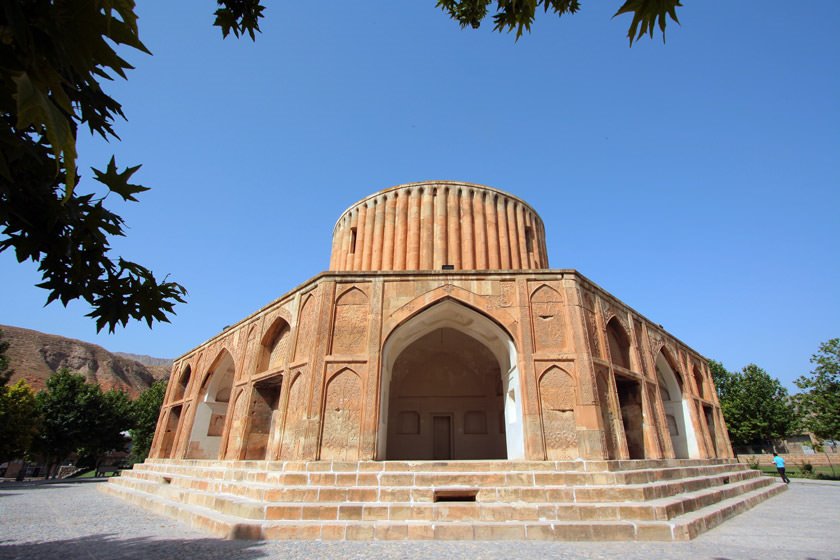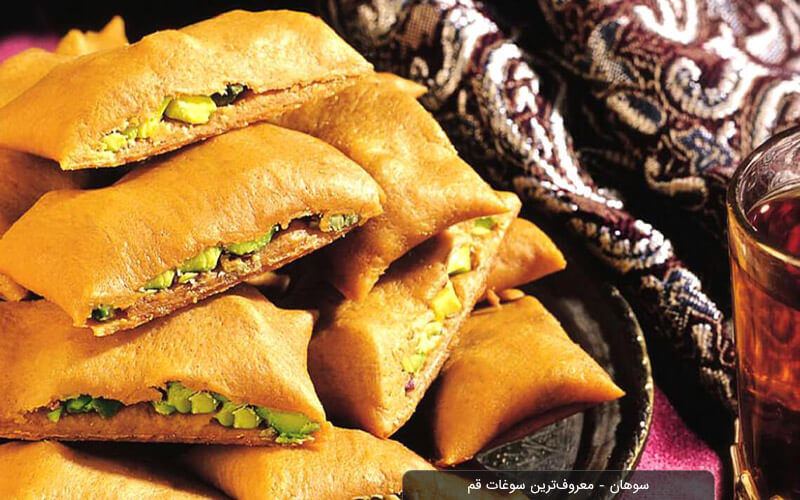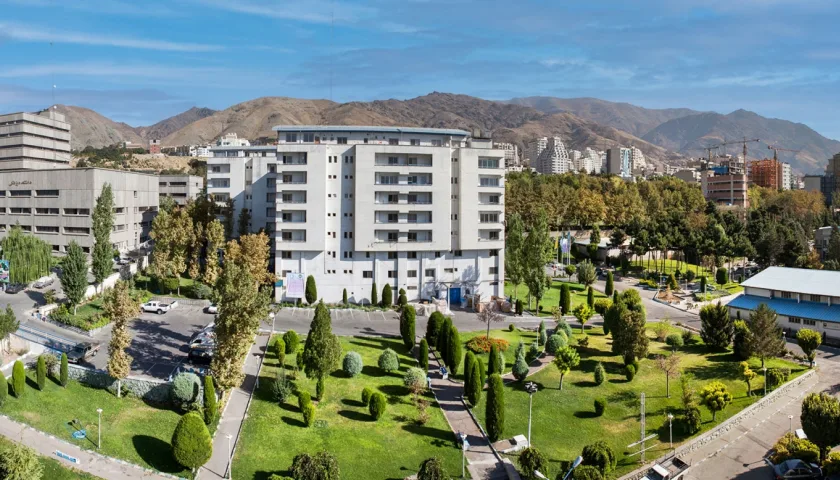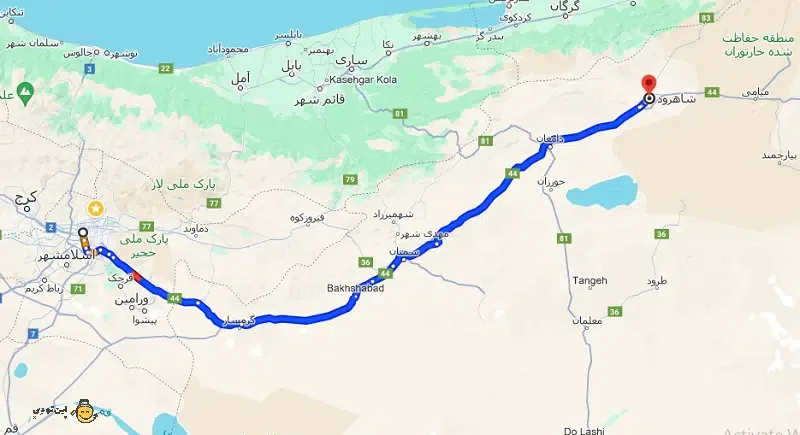Khurshid Palace, Mashhad: Exploring Iran’s Architectural Marvels ?
When Nader Shah Afshar returned from the conquest of India, he brought a valuable treasure of war spoils with him. To conceal these jewels, what better place than an impregnable fortress surrounded by mountain peaks with drawn blades?
Nader Dezh, Nader’s Palace, Kalat Palace, Palace of the Sun, or Amirat Khorshid, is a structure dating back to the 7th to 13th centuries AH (Islamic calendar) located in Kalat, within the city. This monument was registered as a national heritage of Iran with the registration number 329 on February 20, 1318.
The Museum of Great Khorasan in Koohsangi, Mashhad, is designed based on the architecture of Kalat Palace.
History
Kalat Palace, also known as the Palace of the Sun, was built in 1151 AH by the order of Nader Shah for residence and treasury purposes for jewels and spoils in Kalat (Nader Dezh). Kalat means fortress, tower, and fort (before Islam, almost all cities were built in the form of Kalats, where the class system was observed. This social hierarchy was initially three classes, later transformed into four classes, including military commanders, priests, artisans, and industrialists, each having their place in the city).
This building dates back to the early years of Nader Shah’s rise to power. The construction of the palace continued throughout the entirety of his reign, even until the last years of Nader Shah’s life in 1160 AH. This is evidenced by the beautiful inscription of the “Surah An-Naba” (Chapter 78 of the Quran) on the round space around the dome, which refers to this date.
Architecture
This palace is situated in the midst of a large garden, consisting of a three-story structure. Its height was approximately 25 meters in the past, but due to the damage to the third floor, its current height is not more than 20 meters. The first floor is octagonal, and it is supported by four rows of stairs in the form of a pyramid. The entrances to the palace are located on the octagonal sides, leading to the main hall.
The palace has a total of 12 rooms, and each room is adorned with paintings and stucco decorations. Until a few decades ago, among these decorations, there were also images of Naderi princes. In the middle of this octagonal building, there is a cylindrical tower in two floors, which served as the residence of the king and his family. The beauty of this palace is more evident in the external decoration with a conical congress-like structure, showcasing a Gorkani-Hindi architectural style. The interiors of the rooms are decorated with paintings and stucco. In the middle of the structure, a circular tower with openings resembling half-stones, known as Khayari, is built from the roof surface.
From ancient times, Kalat has been a significant stage for historical events, first mentioned in the Shahnameh, where it served as a refuge for the descent of Siavash. Additionally, it is depicted as the battleground between Iranians and Turanians in the Shahnameh.
The golden age and glory of Kalat were during the reign of Nader Shah Afshar, after which its influential and determining role gradually diminished. Situated 45 kilometers northeast of Mashhad amidst the Thousand Mosque Mountains, Kalat’s unique position makes it an exceptional phenomenon. The natural and formidable fortification of Kalat, virtually impenetrable even with the military capabilities of the early weapons era, turned this region into a sanctuary for rulers and even a place of exile for rebels throughout history.
Kalat gained fame for its impregnability in 1380 AD. Despite fourteen attacks by Timur Lang, each attempt ended in failure. Today, the city hosts one of the most important attractions in Khorasan Razavi, the Khorshid Palace.
The Khorshid Palace, standing as a jewel within an expansive courtyard, is one of the remarkable structures of the Afsharid era in Kalat. Initially intended to be the mausoleum of Nader Shah, the Khorshid Palace is a mysterious and enigmatic structure constructed from bricks, with its external facades carved from the stones of the region. The name “Khorshid” has no connection to the shining yellow disk seen in the sky every day; rather, it refers to one of Nader Shah’s wives.
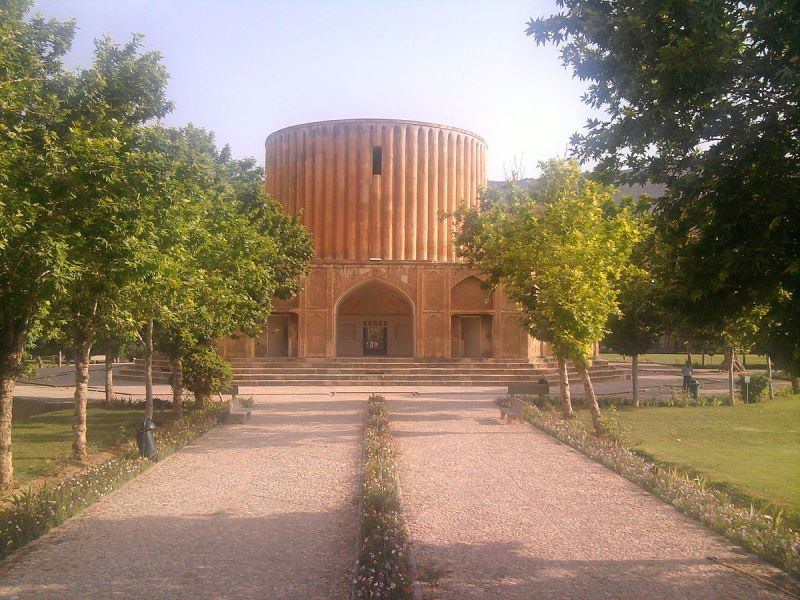
The Geographic Location of the Khorshid Palace
Construction of the Khorshid Palace began in 1151 AH, but the building process continued throughout Nader’s entire reign, persisting even into the final years of his life in 1160 AH, ultimately left incomplete with Nader’s sudden death.
It is said that after the conquest of India, Nader Shah brought craftsmen from India to work on the building. At first glance, the palace appears heavily influenced by the architectural features of India, as the materials used in its facade and carvings of fruits and tropical birds give the structure the appearance of Indian architecture. However, beneath its surface layers, this palace has a distinctly Iranian identity.
The twelve rooms of this palace are adorned with paintings and stucco work, suggesting that the building may have served as the residence of the king and his dynasty. Following Nader Shah, the Khorshid Palace was also utilized as a residential retreat during the Qajar period.
This three-story palace is situated amidst a large garden. Initially, its height was approximately 25 meters, but with the destruction of the third floor, the height has been reduced to 20 meters.
When you look at the structure, the first thing that catches your eye is a cylindrical tower with stone half-columns emerging from the center of the building like a tower. This tower is octagonal from the inside, with a dome on top. An interesting feature is the gap between the cylindrical volume and the rest of the structure, resembling an expansion joint, and at the top of the ground floor, stones are used to seal this gap.
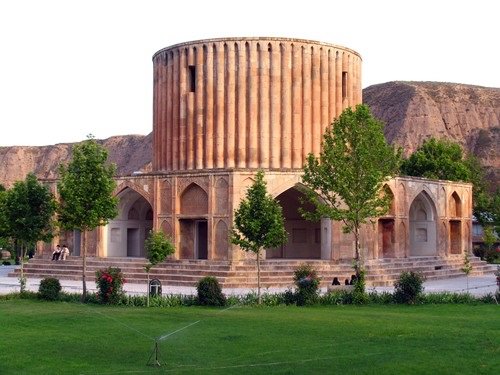
The Khorshid Palace
By removing a portion of the four keystones at the top of the tower, illumination inside the tower has been achieved. The keystone of the tower is simple, but the capitals have minimal decorative carving. The external facades of the building are carved throughout, but in certain sections, the decorative stone carving is incomplete, indicating that the structure is unfinished. The internal facades of the tower section are shaped with alcoves on two floors, adorned with paintings and gilding. Surah Naba’ is inscribed in color above the alcoves on the first-floor tower section. Surrounding this space are adorned alcoves, with the eastern-facing alcove serving as the entrance to the building.
The Courtyard of the Khorshid Palace
The basement has two parts: an octagonal space under the upper octagonal space with four columns, and rooms and corridors surrounding it. Based on studies and speculations by researchers, the central communication paths of the basement and the ring of spaces around it were blocked off at some point and then reopened from another location. Also, the communication paths between the basement spaces, the ground floor, and the exterior of the building were gradually established and initially had a different configuration. It is hypothesized that the Khorshid Palace was constructed upon the remains of another structure (likely an Ilkhanid tomb), with the remnants of its basement slightly below the current basement.
The stairs leading from the ground floor to the roof, as well as the stairs ascending from the roof to the top of the tower, were created by cutting the stones and are difficult to ascend.
The ground floor of the building is on a platform one and a half meters high, reached by five steps in a courtyard style. The building’s courtyard includes a garden with four quadrants on two levels, with the Khorshid Palace situated at the intersection of its two axes.
Visit
Currently, this mansion is utilized for tourism purposes. Every year, especially in the early spring season, numerous visitors come to the city of Kalat to explore the palace and other historical and natural attractions in the region.
Visiting Hours
Currently, the entrance gates of this mansion are open to tourists from 8 AM to 8 PM for visits.
Translation to English:
Visitation
Presently, this mansion serves as a tourist attraction. Each year, particularly in the early spring season, a considerable number of visitors come to the city of Kalat to tour the palace and explore other historical and natural sites in the region.
Authorized Visiting Hours
Currently, the entrance gates of this mansion are open to tourists from 8 AM to 8 PM for visits.
Conclusion
Recent archaeological excavations have revealed the foundations around the Khorshid Palace. Surrounding the building, there is a rectangular canal and shallow basins with small stone fountains. The northwest-southeast axis of the garden is more stretched, with its entrance located on the eastern side. Between the main entrance of the garden and the palace, there is a long rectangular basin with tall stone fountains. Today, the Khorshid Palace and its garden have been completely reconstructed.
The story is that Khursheed mansion is a mysterious building that we don’t know everything about, many have considered it a palace, many have considered it a place to store precious and rare loot, some have considered it a prison due to the existence of a cellar, but the existence of several tombs with The similar design and a short time interval from it strengthen the hypothesis that it is a tomb, the existence of a cellar and the inscription of Surah Naba, which is usually written in tombs, are further reasons. However, we are still not completely sure about this building, what we know is that even for once, you should see this building closely and enjoy seeing it.

